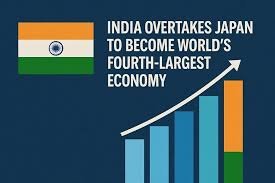In a bold move that signals towards a sharp escalation in trade tensions, China has announced a 34% tariff on all U.S. imports, Starting April 10, 2025. This is the first major retaliatory action against President Donald Trump’s recent tariff hikes on Chinese products. The move is expected to have widespread economic implications, straining relations between the world’s two largest economies.
A Retaliatory Strike Against U.S. Trade Policies
The Chinese government has taken this decision as a necessary countermeasure to what it calls “unfair and unilateral” U.S. trade policies. The Ministry of Commerce stated that the U.S. tariffs violated international trade regulations and disrupted global supply chains. By imposing a sweeping tariff on American products, China aims to exert pressure on the U.S. economy while demonstrating its unwillingness to back down in this intensifying trade dispute.
Key Measures in China’s Response
Beyond the tariffs, China has implemented additional economic countermeasures:
-
Export Controls on Rare Earth Elements: China will now limit exports of essential rare earth materials used in high-tech industries, including aerospace and defense. This move could severely impact U.S. companies reliant on these critical resources.
-
Sanctions on U.S. Companies: China has blacklisted 27 American firms, particularly in the defense and technology sectors, including those involved in arms sales to Taiwan.
-
Suspension of U.S. Agricultural Imports: Imports from two major American poultry suppliers, Mountaire Farms and Coastal Processing, have been suspended due to alleged violations of Chinese food safety regulations.
Impact on Global Markets
The immediate fallout from China’s announcement has been significant. Stock markets worldwide have reacted negatively, with Wall Street experiencing its worst trading session in years. The tech-heavy Nasdaq dropped by 6%, reflecting fears of prolonged economic instability. In addition, Brent crude oil prices plunged by 6.6%, signaling concerns about a potential slowdown in global trade.
U.S. Response and Future Implications
President Trump has defended his administration’s trade policies, arguing that the tariffs on Chinese goods are necessary to protect American industries and reduce dependence on foreign manufacturing. Treasury Secretary Scott Bessent has called for diplomatic engagement but warned that the U.S. is prepared for further economic countermeasures if needed.
Meanwhile, global leaders, including those from the European Union and emerging economies, have urged both countries to de-escalate tensions and seek a diplomatic resolution. Many fear that a prolonged trade war could lead to severe disruptions in global markets and trade flows.
What Comes Next?
With both the U.S. and China standing firm, the situation remains highly volatile. If neither side backs down, additional rounds of tariffs and trade restrictions could follow, deepening the economic standoff. Many analysts believe that negotiations are necessary to prevent a full-scale trade war that could have long-term consequences for the global economy.
As the April 10 deadline approaches, all eyes will be on how the U.S. government responds to China’s retaliatory measures and whether there is room for diplomatic engagement to ease the rising tension.










